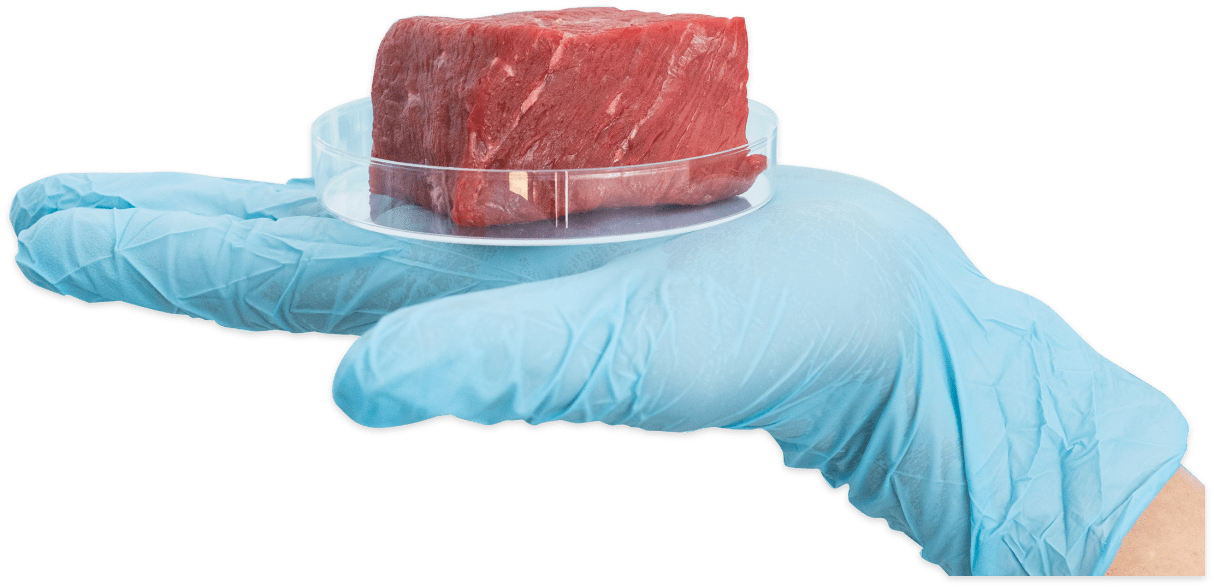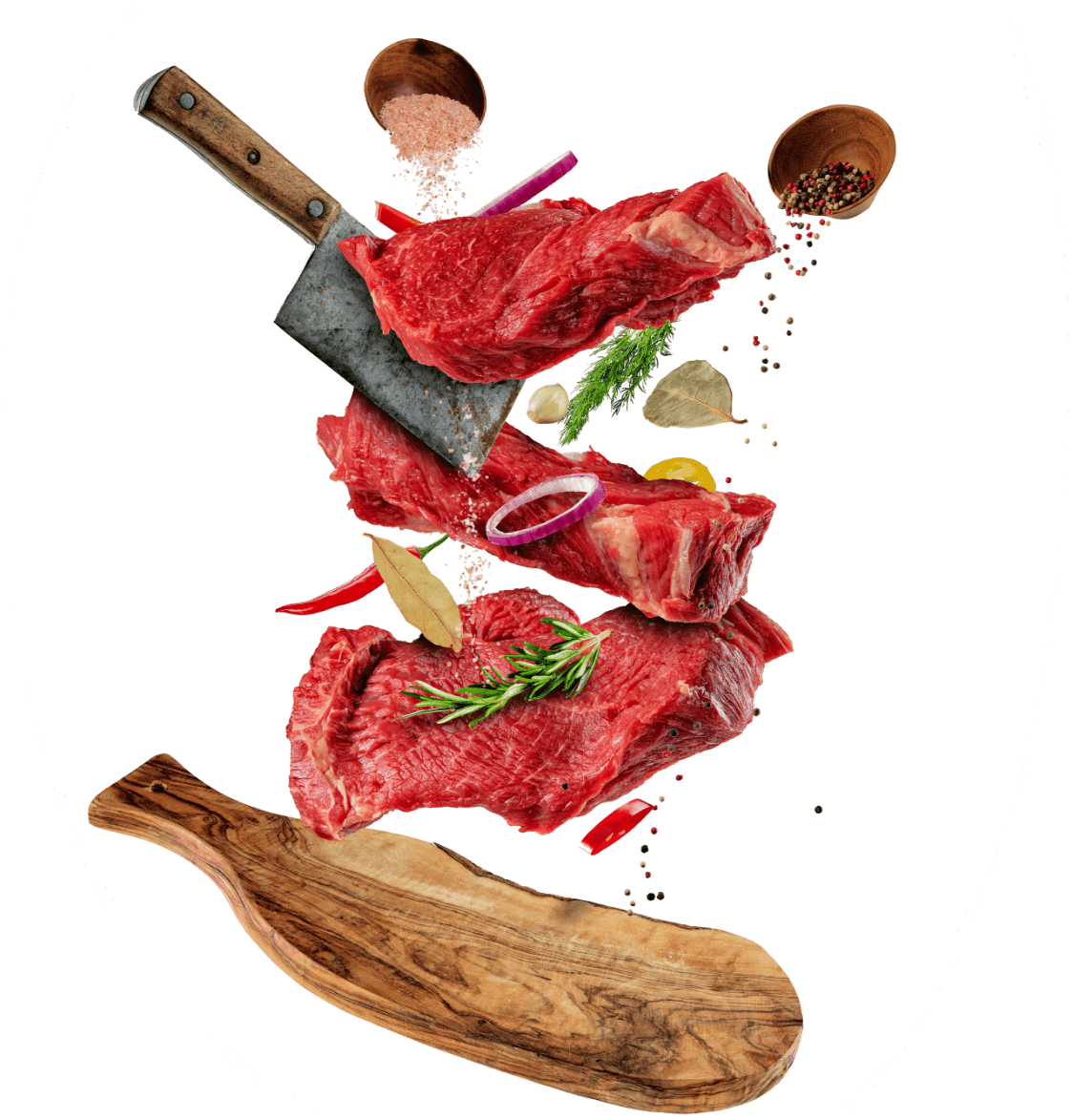Adua Villa explores the use of AI for wine-food pairings while reflecting on the benefits and ambiguities of this technology in the food and wine sector.



The recent IPCC report (Intergovernmental Panel on Climate Change) highlights the importance of changing our diets in order to reduce greenhouse gas emissions: around 25% of our current environmental problems are connected to our eating habits. By changing our diets and increasing our consumption of plant-based food and pulses, we could free up millions of square kilometres of land and reduce global CO2 emissions by up to 21% by 2050.
According to the FAO, the food industry contributes to over a third of global greenhouse gas emissions, and 80% of these can be attributed to meat production and animal products. Beef, pork and poultry make up 93% of global meat consumption, and at least 70% of their production depends on intensive farming.
Current meat production methods are on the receiving end of strong criticism, not only because of the obvious ethical issues relating to animal wellbeing, but also due to their high water consumption, their impact on deforestation, the role of intensive farming in the spread of zoonotic diseases, and the enormous amount of greenhouse gases they release into the atmosphere. In particular, methane. Ruminants, such as cows and sheep, create methane as a by-product of their digestive processes, and they release it through exhalation or manure, contaminating groundwater. Not only is this production system inefficient in terms of the use of natural resources, it also has a significant impact on local biodiversity, surrounding ecosystems, and, of course, climate change.

Synthetic meat production, cultivated in a laboratory, which requires less energy and resources, could be a solution to reduce the environmental impact of traditional meat production. However, it is also important to consider the social, cultural and ethical impact of new food technologies, as well as their cost-effectiveness and the factor of waste. And there is an international debate raging on these issues.
The concept of artificial food refers to foods created in a laboratory, using genetic engineering techniques and biotechnology. Artificial meat is a specific type of artificial food that aims to replicate the characteristics of traditional meat, without the use of animals.
Cultivated meat is instead produced using stem cells taken from a live animal, then grown in a laboratory using sophisticated systems to obtain the meat desired.
The European Commission has expressed its opinion, confirming that artificial meat is considered a food product, and that it must therefore respect European regulations in terms of food safety. At the moment, synthetic meat has not yet been approved for sale in the European Union, but scientific evaluations are underway to determine whether it is safe and respects the quality standards required.
And while in Italy the debate on the issue of "cultivated meat" is still heated and unresolved, innovative companies have emerged and established themselves all over the world, producing "non-meat meat", some of which is also plant-based.


An example of this is Beyond Meat, founded in 2009 in Los Angeles by Ethan Brown, which has become one of the go-to brands for vegetarians and vegans with its plant-based hamburgers. In 2019, Burger King also launched its own plant-based sandwiches in Italy, which taste like meat, but do not contain any.
We can attribute the origins of cultured meat produced in a lab to the work of American pathology professor Russell Ross in the 1950s, while the first public demonstration of the edibility of synthetic meat was in 2013, in London. At the time, the cost of a single hamburger made from synthetic meat was around 375,000 euros.
Over the last 10 years, this cost has obviously significantly decreased.
According to the Good Food Institute, the international non-profit organisation that promotes alternative proteins, by 2030 it will be possible to reduce the cost of synthetic meat over 8,000 times, from the current price of $18,000 to only $2.50 per kilo. In order to achieve this goal, we need large-scale production and shared research projects at an international level.
The alternative protein sector, which is constantly evolving, now counts over 1000 start-ups globally. Some of these companies work on finished products, while others create services, equipment, ingredients or software that will allow the sector to prosper.

Every year, the Good Food Institute offers emerging start-ups the opportunity to present their innovations in the food sector. To cite a few examples, in autumn 2023, 6 companies got through the special selection process, out of hundreds of candidates: BioBetter, a molecular agriculture start-up that focuses on the use of tobacco plants as efficient protein sources; Cultivated Biosciences, which has created a creamy ingredient containing no dairy, to improve the texture of plant-based dairy products through the fermentation of biomass; Dynacyte Biosciences, with its system of bioreactors for cultured meat and precision fermentation; Extracellular, which contributes to the scalability of the cultured meat production process by providing production and R&S services; HERlab, a synthetic biology start-up that combines cutting-edge technology, AI and interdisciplinary skills to create a platform that discovers and optimises next-generation microorganisms for precision fermentation; and Unlimeat, which produces plant-based products, including meat, fish and dairy, with a variety of textures and flavours.
But there is also a company that creates sustainable lab-grown cocoa, California Cultured, and an Israeli deep-tech company that develops cultured meat using 3D printing technology, Steakholder Foods, which has also created the first 3D printed ready-to-cook fish in collaboration with Umami Meats in Singapore.
These fillets are created using cells from groupers, cultivated and grown in a lab and then transformed into muscle and fat. The final step involves the addition of bio-ink to give the product an appearance similar to real fish.

3D printing is a technology that can be applied to many types of food, such as crackers, biscuits, pizzas, meatballs and hamburgers, including meat. Printed meat can be made from plant-based ingredients or derived from the duplication of animal cells: it is made using technology similar to what is used for cakes, but instead of jam, cultured meat cells are used.
And in terms of nutrition? Artificial meat attempts to replicate the nutritional values of traditional meat. Of course, there are still a few doubts about the long-term health effects of the consumption of artificial meat, and we therefore need further research before we consider it as a food for everyday use. Alternative protein sources such as cultured meat, plant-based proteins and insect flour could be a solution to the problems of feeding humanity. A review published in Global Food Security has described these options as "interesting prospects", but they still need further research, studies, data, transparency and correct information.

Adua Villa explores the use of AI for wine-food pairings while reflecting on the benefits and ambiguities of this technology in the food and wine sector.
Cellular agriculture is revolutionising the coffee industry: by growing coffee sustainably, it reduces emissions and helps conserve ecosystems.
